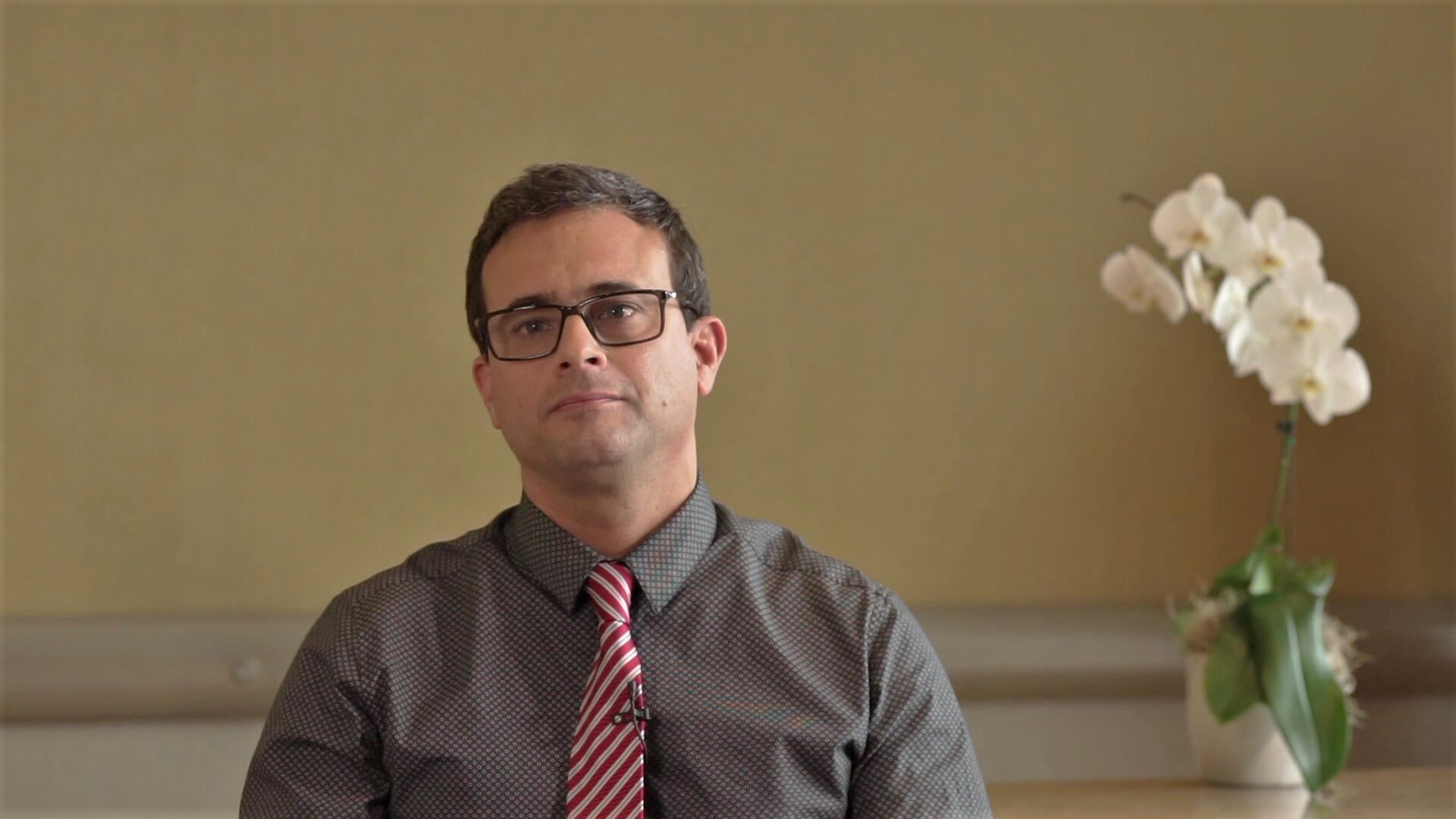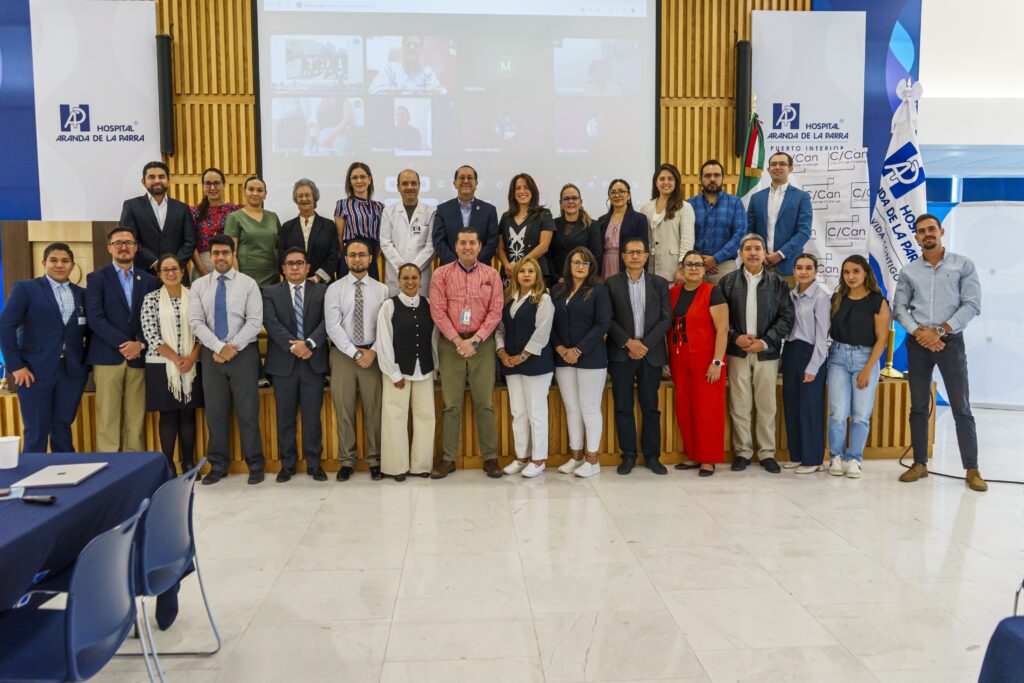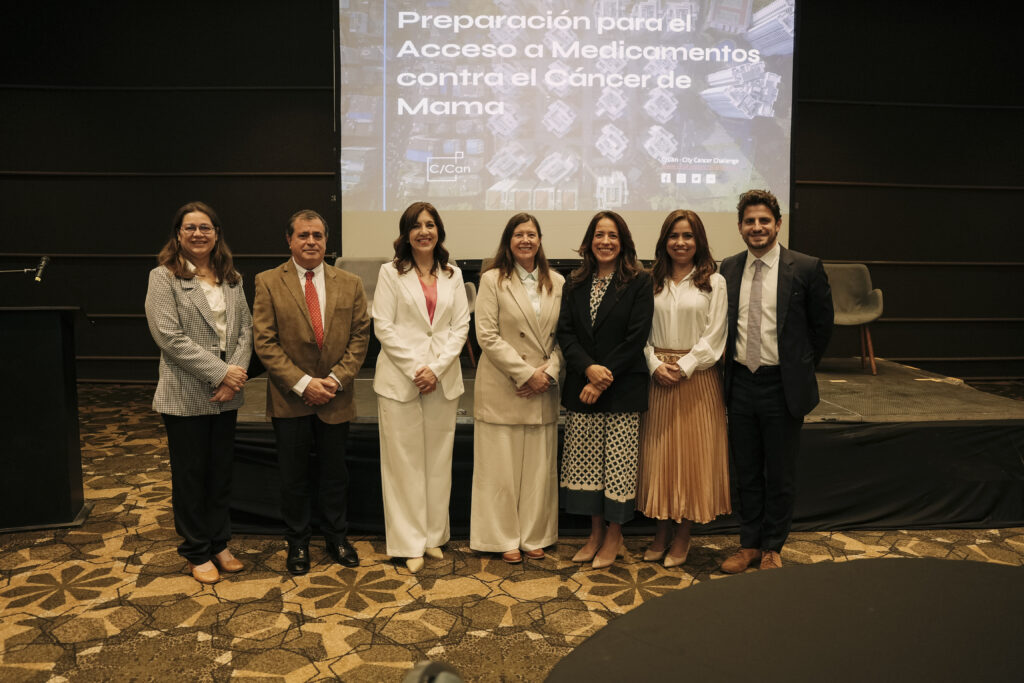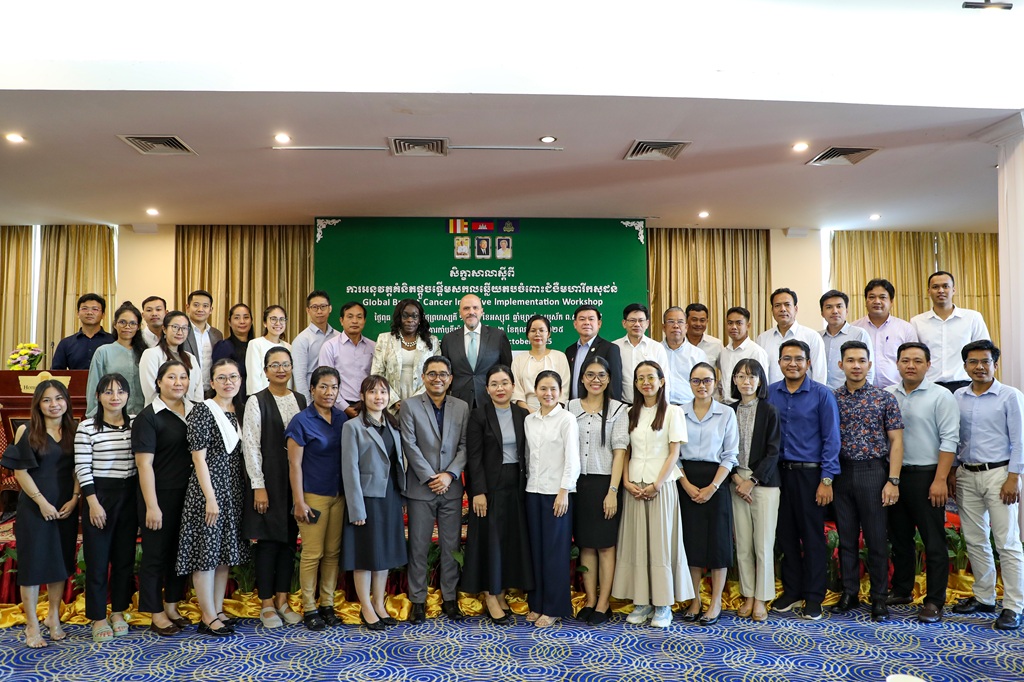
Dr Ramírez’s extensive experience has established him as one of the leading specialists in Paediatric Haematology and Oncology in Cali, Colombia. He has been involved in the City Cancer Challenge (C/Can) initiative in Cali from the start as a key member of the City Executive Committee (CEC) and Chair of the Technical Committee, leading the coordination and implementation of the projects prioritized by the CEC.
Dr Ramírez currently coordinates the C/Can task force on Childhood Cancer made up of leading experts in the field in Colombia, Yangon, Paraguay and Kumasi. These are Aye Aye Khaing, Head of Department of Haemato-Oncology Unit, Yangon Children Hospital, Yangon, Myanmar; Angélica Samudio, Paediatric Haemato-Oncology Department, Asuncion; Vivian Paintsil, Senior Specialist Paediatrician, KATH, Kumasi; Lorna Renner, Head of the Paediatric Oncology Unit, Korle Bu Teaching Hospital, Accra; Jaques Van Heerden, Universitair Ziekenhuis Antwerpen, UZA · Division of Pediatric Oncology and Hematology; Joyce Kambugu, Head of Paediatric Oncology at the Uganda Cancer Institute.
We spoke to Dr Ramírez about the issues cities like Cali face in improving access to cancer treatment for children, what has been achieved so far, and what still needs to be done.
The WHO estimates that approximately 400,000 children around the world are diagnosed with cancer each year. Around 80% of these children live in LMICs where mortality rates are unacceptably high. Could you outline some of the reasons why we still face this level of global inequality?
The global inequity in providing care and curing children with cancer is due to several factors, including tumour biology, host (patient), health system capacity and organisation, social, economic and cultural factors. However, the factors making the most prominent difference are:
- The health system capacity and organisation
- Social, economic, and cultural factors.
These specifically cause:
- Time delays between clinical manifestations and diagnostic confirmation; this leads to more significant initial complications associated with the tumour, greater early mortality and, if it is a solid tumour, to presentation in advanced stages (metastatic), with a worse prognosis.
- Misdiagnosis or under-diagnosis; at the moment, establishing an accurate diagnosis requires pathologists with experience in childhood cancers and more sophisticated pathology techniques, including molecular testing. Precise diagnosis will accurately guide treatment and reduce associated toxicities (including treatment-related death).
- Wrong or insufficient stratification; tumour stratification is key to adequate cancer treatment. Shortages of specialised human resources, imaging technologies and nuclear medicine contribute to this survival gap.
- Reduced effectiveness of treatment. This is a fundamental problem in LMICs and is caused by:
- Lack of access to cancer treatment with curative intent.
The first step is for patients to have access to effective treatment. This implies access to treatment protocols that have currently been shown to offer the possibility of a cure. This requires, among others, specialised human resources (not only oncology, oncological surgery and radiotherapy but also support specialities, nurses, assistants, etc.), access to oncological and non-oncological drugs (e.g. antibiotics/mycotic), access to blood products 24 hours a day, clinical laboratory, paediatric intensive care unit, surgery, radiotherapy, specialised pharmacy for preparation of cytostatics.
-
- Refusal of treatment.
Refusal of cancer treatment by families, especially if the child is young (<4 years) or adolescent, is not uncommon in these countries. This is often the case when surgeries perceived by the family as disfiguring are required, for example, enucleation in some cases of retinoblastoma or amputation in some cases of bone tumours or soft tissue sarcomas. Also, in cases of brain tumours, because of fear of neurological sequelae related to surgery or radiotherapy.
-
- Discontinuous or interrupted treatment.
Effective cancer treatment is usually associated with the intensity of treatment. The intensity is a function of the doses administered (doses of drugs in cycles) and the time between doses (time between cycles), or time between surgery and adjuvant treatment or time between surgery and radiotherapy. There are different reasons why treatment does not have the desired continuity, among them:
-
-
- Lack of adherence of the family;
- Fragmentation of health services;
- Administrative problems of health services, including insurers;
- Medical complications;
- Treatment abandonment.
-
-
- Treatment abandonment is a social phenomenon very characteristic of low- and middle-income countries. A patient who goes >4 weeks without treatment with curative intent for non-medical reasons is considered to have abandoned treatment. Its causality is complex.
- High frequency of complications and death associated with treatment.
Most treatment protocols for children with cancer are very intensive. These intensive protocols mean it is necessary for the health system and the institutions that provide this service to have sufficient capacity (technical and resources) to manage these complications successfully. Chemotherapy tolerance and complications are often aggravated by the poor diets of children in LMICs. These capacities range from initial management and timely referral of children with febrile neutropenia (from basic to more complex levels) to effective hospital-acquired infection control programmes, advanced laboratory support for bacteriology, mycology, molecular testing, imaging, access to blood products, intensive care, paediatric infectious disease specialists, and other paediatric specialities.
What are the best strategies to reduce the burden of childhood cancer in LMICs? Can you give us some examples?
At present, the control of childhood cancer cannot be achieved using primary prevention strategies (control of risk factors) or secondary prevention (screening procedures). Therefore, this control relies on diagnosis, treatment and rehabilitation.
According to the Lancet Commission expert group on Paediatric Oncology, strategies have to be combined to impact on long-term survival. This is logical given that survival is an endpoint of multiple factors as I described in the previous question.
Our strategies have to involve improving access and diagnosis, and avoiding loss of treatment effectiveness and treatment-related deaths. As you can see it is a huge challenge for these countries. I would mention four points that are pivotal for tackling these problems:
- A health system with universal population coverage to assure financial protection to the patient during treatment and follow-up. In addition to universal population coverage, the health system should have a comprehensive benefits plan for children with cancer. The benefits plan should be broad enough for access, comprehensive, and updated procedures for patients’ diagnosis, treatment, and rehabilitation.
- Improvements to the quality of the health system’s cancer care. These improvements should be from primary care providers (timely identification and referral of suspected diagnoses, oncologic emergencies and treatment complications) to more specialized care. This would include, among others, centres with specialized paediatric oncology units, in addition to all the support mentioned above. I would also include oncology patient navigation services here to break down the administrative and social barriers in highly fragmented health systems.
- Some kind of social and financial protection for these families. Universal health insurance helps, but it is not enough. Foster homes are also of great help to families who are displaced from their residence due to the illness of one of their children.
- Systems that monitor clinical outcomes on an ongoing basis (in this case, survival) and some determinants on time for decision making. The knowledge generated will inform intervention strategies from government and clinical, insurance, and independent stakeholders. In short, the progress of survival of children with cancer in Cali shows how these measures have been having an effect. The five-year survival of children with cancer increased from 32% (1992-1996) to 55% (2002-2007), largely due to the implementation of universal health coverage, which in the first decade of this century was already above 80%. Gradual improvements in the quality of care (which decreased treatment-associated mortality) have played a part, and we have also observed a sharp decrease in treatment abandonment due to better patient navigation, the creation of psycho-social support groups, access to transportation subsidies and increased capacity of foster homes; this boosted the survival rate in Cali to 69% between 2014 and 2018.
Moving on to the importance of qualitative data, a medical team led by you at Cali’s Universidad del Valle designed Vigicáncer, a unique digital system to measure the treatment outcome on children with cancer in the city and which used the information to promote public children’s health policies. Do you think this system could be replicated in other cities around the world?
The system for monitoring clinical outcomes of children and adolescents with cancer (VIGICANCER) started in Cali and is currently operating in 10 cities in Colombia. This system is unique in that it works with the Cali’s Population-based Cancer Registry (RPCC) and includes clinical variables among its measurements. By being integrated into the RPCC, we achieve estimates of all children with cancer treated in the city, and by adding clinical variables it makes the information relevant, not only at the level of health policy, but also to provide feedback to the care groups (clinicians) to guide local improvements.
The system has two models; the advanced version, which is integrated with the population-based cancer registry (PBCRs), can only be replicated in cities where a PBCR is already in place. Replication of this advanced model was done to the PBCR in Tijuana. This advanced model can obtain the most valid survival estimates and extrapolate them to all the children treated in the city.
The second model is the centralised pooling of paediatric cancer hospital registries in a given city using the same instruments. This model has not yet been replicated in other countries.
What recommendations would you give to public health authorities in resource-constrained cities about how to set up and use childhood cancer data systems to drive continuous improvements in the quality of care in resource-constrained settings and inform policy decisions?
My recommendations would be:
- Be clear about the objectives you are seeking through the system, in the short, medium and long term.
- Issue a regulatory framework for this type of system.
- Have an expert in paediatric oncology in the group developing the system.
- Write a detailed document (protocol) to serve as a roadmap, with special attention to, among others, case definition.
- Write a detailed procedural document (operative manual).
- Case identification and follow-up processes should be conducted in an “active” manner (active search, active follow-up), in addition to the use of passive methods.
- Do not let case identification remain only as “mandatory reporting” by law.
- Do not leave all the collection of the system to paediatric oncologists.
- Have dedicated staff to perform data quality control and quality assurance.
- Have dedicated staff to perform analysis and dissemination of the results.
Turning to your work with C/Can, can you tell us about preparing the Guide on How to Develop a Training Programme for Management of Childhood Cancer in Primary Health Care level?
As I mentioned previously, in many cases the time between the appearance of symptoms or clinical signs and diagnostic confirmation can determine the prognosis for cure. In Cali, we have seen how children with bone tumours with access to subsidized (public) insurance reach metastasis in 70% of the cases, compared to those using contributory (semi-private) insurance, which is 30%. This is just one example of how important it is for the entire health system, especially primary health care providers, to be aware of the signs and symptoms and understand the importance of referring these patients in a timely manner. We should remember that these diseases are not frequent in primary care consultations and therefore are hardly suspected.
Another critical point is the complications associated with treatment when the patient is already at home. The initial consultation with some of these complications is often in a peripheral primary care centre or emergency department. These complications often require rapid management, especially if they are infectious. So they must be identified early.
Finally, cancer survivors during childhood often require follow-up and care other than oncologic care, due to sequelae of the disease or treatment. These may be present for the rest of their life. In this sense, it is also very important that health care providers, other than paediatric oncologists, recognise these needs.
All of this demonstrates the importance of the C/Can syllabus content and the training that is planned to be developed.
And in conclusion, what do you see as the added value of the guide, who will benefit from it, and what do you think the long-term impact of this project will be?
I think this was partially answered in the previous answer, but in conclusion, I would say that C/Can’s Guide on How to Develop a Training Programme for Management of Childhood Cancer at the Primary Health Care Level, and especially the training, will be of great value for paediatric oncology patients. Particularly given that it deals with topics that are generally not included in the curricula of medical programmes.





